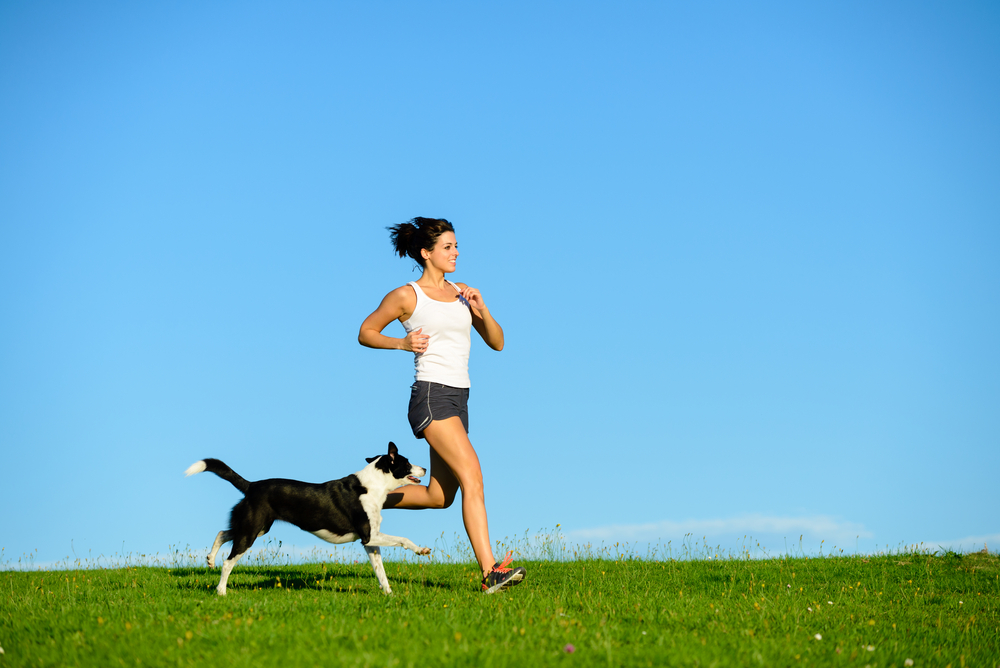Top 7 Tips for Running with Dogs
 Taking Fido out for a run seems pretty straight-forward. Leash, water, run, done – right? Actually, there are several things to keep in mind for your dog’s safety before you head out together. The best exercise is one that is safe and worry-free, so use our 7 tips for running with dogs to help you both get the most out of your runs.
Taking Fido out for a run seems pretty straight-forward. Leash, water, run, done – right? Actually, there are several things to keep in mind for your dog’s safety before you head out together. The best exercise is one that is safe and worry-free, so use our 7 tips for running with dogs to help you both get the most out of your runs.
1 Check with your veterinarian.
We always recommend checking with your veterinarian to be sure your dog is in good condition for running. This type of exercise is great for their mental and physical health, but it is more strenuous than a simple walk. Before you start, be sure your pet is in good health!
2 Is your pup up for the challenge?
There are certain dog breeds and age levels that don’t do well with running. Puppies are growing rapidly, and their bodies are simply not up for the task. It’s best to wait until they are over the age of one to start running with them. You can still go on walks, which is a great way to start training. Just be sure to take it slower.
Brachycephalic dogs (dogs with a flat and wide skull shape such as a pug, bulldog or a frenchie) do not do well on runs due to breathing troubles and shorter legs. Try a brisk walk or interval training instead!
3 Start with a short walk.
Dogs can’t stretch before running, so a short walk is a good way to get their blood moving and their heart pumping without jumping straight into a run. This also allows them to take a potty break that won’t interrupt the run.
4 Build up gradually.
When you decide to take your dog running with you, it’s easy to get excited and want to run five miles the first day. Not only is this not good for you, but it’s dangerous for your pet. Start slowly and work your way up.
Build up gradually for the sake of your dog’s paws. A dog’s pads are very sensitive so building up slowly will help the pads to toughen up.
5 Check their paw pads.
In addition to paw pads being sensitive, you will want to keep an eye out for rocks, twigs and broken glass. Also be conscious of hot pavement. Consider running where there is concrete for you and grass alongside for your dog. Otherwise, steer clear of pavement during the hottest parts of the day.
6 Stay hydrated.
Always make sure you and your pup get water before and after a run. Take water with you, especially if you plan on a long run or if it’s a warmer day. Stop for a cool break in the shade while rehydrating.
7 Watch your dog’s body language.
Your running buddy cannot tell you when he’s too tired or when he needs a break. Keep an eye out for how he’s doing. Watch for when he’s lagging far behind, excessively panting or seems to have glazed eyes. Note how far you ran and plan accordingly for the next time you run.
If you are unsure whether running is for you and your pet, please speak with your veterinarian or one of us here at Oakland Veterinary Referral Services. We’re happy to answer any questions you might have!


